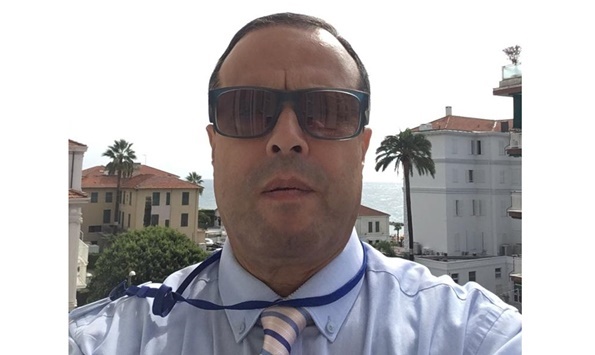The Qatar Press Centre (QPC) organised a lecture on Al Arabi magazine and its historical role in documenting Arab cities, presented by Professor Abdulaziz al-Buhashem al-Sayed, a researcher in history and heritage.
The evening began with a speech by QPC vice-chairman Professor Abdullah bin Hayi al-Sulaiti.
He stressed that Al Arabi magazine, published from Kuwait, played a prominent role in spreading Gulf, Arab and Islamic culture, and contributed to documenting Arab cities and cultural heritage over decades.
Al-Sayed spoke about the journey of Al Arabi, the first issue of which was published in December 1958, and how its reach extended from the Gulf, even to remote cities.
He said that the magazine represented the soft power of Arab unity, and was a cultural dream that started from Kuwait to the Arab world.
As the objective was a comprehensive Arab cultural magazine, Kuwaiti poet and writer Ahmed al-Saqqaf spent a whole year touring Arab capitals to select the magazine's staff.
“All capabilities were harnessed to make the magazine a success from the very first issue,” al-Sayed said. “As 30 thousand copies were distributed, and the magazine sought to be a comprehensive cultural platform, it was therefore called ‘Diwan Al-Arab’.”
He said that the choice of its first editor-in-chief, Professor Ahmed Zaki, who was the Cairo University president at the time, gave the magazine a global vision, one that drew inspiration from the *National Geographic magazine.
Al-Sayed added that the magazine’s sections were carefully chosen to be an integrated cultural, literary and scientific platform.
Articles were written by the most prominent Arab thinkers and writers, such as Naguib Mahfouz, Taha Hussein, Raja al-Naqqash, Anis Mansour, Farouk Shousha, Abdul Wahab al-Bayati, and Ghassan Kanafani.
Al-Sayed explained that the magazine was not limited to spreading Arab culture; its message extended to the younger generations through the publication of the magazine *Al Arabi Al Sagheer, which was a window for creativity, allocating sections for drawings by, and innovation for, children.
The symposium also addressed the role of *Al Arabi magazine in documenting Arab heritage by monitoring the social and economic life, and the urban development of Arab cities. Including Qatar, which received extensive coverage in the magazine, with 7-8 issues covering different aspects of the lives of Qataris.
Al-Sayed referred to the 18th issue of the magazine, published in 1960, which shed light on life in Qatar over 45 pages.
It documented the economic and social life, through the camera lens, of Souq Waqif and the fish market.
It also monitored the divisions of the markets at that time, and the beginnings of Doha Port.
The cover of the issue carried a picture of a Qatari girl named Moza Fakhro.
“The issue also reviewed pearl diving trips, which were one of the most important pillars of the Qatari economy before the discovery of oil,” Al-Sayed said.
He stressed that the magazine was vital, in terms of documentation and history, at a time when it was not easy to document the history of cities in the region.
“The coverage was not limited to the markets ... it extended to the environment unique to Qatar,” al-Sayed added. “The magazine presented one of the most beautiful documented pictures of the ‘Dahl al-Hamam’ area, which is one of the most prominent geological landmarks in the country.”
“In addition to the fish market, the vegetable market, and agricultural life, it showed how the local economy depended mainly on Qatari agricultural products,” he continued.
The magazine also highlighted Qatari social life, as its crew visited old Qatari majlis, including the taking of rare pictures of a group of more than 50 young Qataris in Al Wakrah.
“The visit of *Al Arabi magazine team to Qatar coincided with the presence of the Danish archaeological mission,” al-Sayed said. “This gave them a unique opportunity to document the antiquities discovered by the mission, in one of the most prominent historical stations that contributed to shaping the features of the ancient Qatari heritage.”
He added that the magazine did not ignore the development of education in Qatar during the 1950s.
The magazine documented how the number of schools at that time reached more than 84 schools, the development of girls’ schools, and how the state became interested in educating its daughters.
This, al-Sayed said, indicated that education was not limited to boys, which reflects the early educational renaissance in the country.
“The magazine also highlighted the efforts of Qatar’s founder Sheikh Jassim bin Mohammed bin Thani, and his role in preserving the environment and establishing reserves, and the many documentations that highlight a number of facts about the history of Qatar,” he added.
“*Al Arabi magazine has provided a lot of good information to bloggers, researchers and historians who wish to document the various time periods of Qatar,” al-Sayed concluded.

Researcher Abdulaziz al-Buhashem al-Sayed holding the 18th issue of the magazine, published in 1960.

